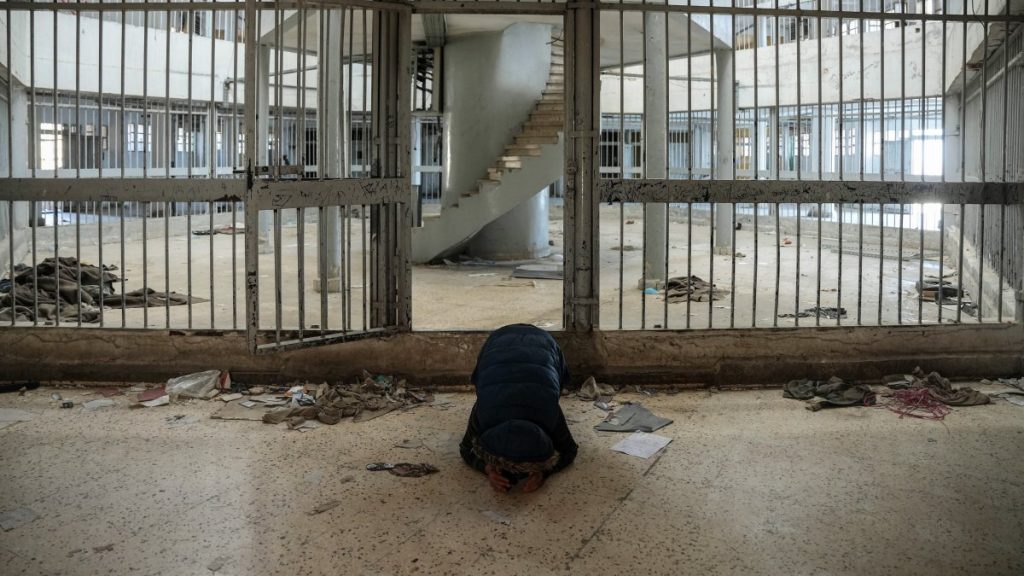The fall of Bashar Assad’s regime in December 2024, marked a significant turning point in Syria’s history. It has shattered the foundations of a dictatorship that captivated Syria for decades. When opposition forces opened the gates of prisons and detention centers, a gush of grief and hope swept across the country. Families, many of whom had endured years of uncertainty rushed to these horrible spots to uncover the fates of their loved ones.
The Syria Civil Defence organization, also known as the White Helmets, played a key role in liberating approximately 25,000 prisoners from Sednaya. Sednaya Prison, located 30 kilometers (18.64 miles) north of Damascus, is notorious for extrajudicial executions, torture and forced disappearances. This prison symbolized the brutalities of the Assad regime against dissenters. It was a place of unthinkable suffering, designed to dehumanize and defeat opponents. Cells in the penitentiary were crammed with prisoners who endured starvation, asphyxiation and relentless abuse.
According to Raed al-Saleh, director of White Helmets, “Sednaya was not just a prison but a human slaughterhouse in which humans were slaughtered and tortured.” The conditions and practices in prison were symbols of inhumanity. Survivors narrate Sednaya as a place where starvation, asphyxiation and torture were routine. Amnesty International estimates that up to 20,000 detainees suffered through sham trials and endured brutal methods of torture, including rape, electric shocks and beatings. Many died under such conditions.
Survivors still grapple with the burden of their pain. Numerous families have borne and still suffer the endless sorrow of missing loved ones, with some tragically lost to extermination. International mechanisms, such as the United Nations’ International Impartial and Independent Mechanism (IIIM), have also gathered extensive evidence of these violations. The brutal acts carried out by Assad’s regime have caused lasting scars on Syrian society.
In addition, the Syrian Network for Human Rights (SNHR) filed grave violations during the 14-year rule of Assad. Over 202,000 civilians were killed, including 23,058 children and 12,010 women. Moreover, 96,321 cases of enforced disappearances and 15,102 deaths under torture were recorded. The regime also used barrel bombs, cluster munitions, and chemical weapons, resulting in the deaths and injuries of thousands of civilians. Particularly, sarin gas attacks in Ghouta in 2013, killed over 1,400 individuals highlighting the regime’s high level of atrocity and disregard for international law.
The suffering wreaked at Sednaya and other detention centers did not occur in isolation. The use of chemical weapons stands out among the regime’s most heinous crimes. SNHR documented 217 chemical attacks since 2012, including the sarin gas attack in Ghouta in August 2013, which killed over 1,400 civilians. Chlorine, sarin, and mustard gas were used which had devastating effects and caused widespread death and injury.
Nerve agents, such as sarin, choking agents, such as weaponized chlorine, and blister agents, such as Sulphur mustard, have been used in Syria throughout the civil war. Organisation for the Prohibition of Chemical Weapons (OPCW), a fact-finding mission recorded that chlorine gas was used in March 2017 and February 2018. Chlorine attacks have been attributed to both the Syrian regime and the Islamic State. In an April 2018 report, Human Rights Watch accused the Syrian regime of the majority of 85 documented chemical weapons attacks in Syria.
UNHCR, the U.N. Refugee Agency, reported that since 2011, over 14 million Syrians have been displaced. Many were forced to leave their homes due to targeted attacks on civilian areas, including hospitals, schools, and markets. Nearly 5.5 million Syrian refugees live in the five countries neighboring Syria – Türkiye, Lebanon, Jordan, Iraq and Egypt. Germany is the largest non-neighboring host country with more than 850,000 Syrian refugees. More than 7.2 million Syrians remain internally displaced, 70% of the population is in dire need of humanitarian assistance and 90% are living below the poverty line.
Under Assad’s regime, detention facilities like Sednaya and Tadmor also became symbols of cruelty. Prisoners tolerated methods of torture such as the German Chair, flying carpet, and being tied to ladders and repeatedly dropped, causing severe physical trauma. Women and children were also not spared; they too tolerated sexual violence and psychological torment, as revealed in numerous survivor testimonies.
Many secret prisons remain undiscovered. Authorities have called on former soldiers and prison guards to provide opposition forces with the passwords to unlock underground electronic doors, claiming that thousands of detainees were still trapped in these dungeons, according to CCTV images. Moreover, the White Helmets, have offered pecuniary rewards to individuals providing information about hidden detention sites.
The atrocities executed during Assad’s regime represent some of the darkest chapters of modern history. Accountability remains a crucial challenge in addressing systematic human rights violations and preventing future tragedies. Notwithstanding the devastating evidence, global efforts to ensure accountability have been slow. U.N. reports have taken down crimes against humanity, but tangible action has been limited. Monitoring groups like SNHR have worked diligently to file violations and released over 1,800 reports since 2011. These include detailed accounts of mass graves, forced disappearances, and the use of torture.
The atrocities committed under Assad’s regime have left deep wounds on Syrian Society. Survivors continue to bear the weight of their trauma and countless families remain in anguish over missing loved ones. Sednaya and similar facilities are stark reminders of the overwhelming costs of unchecked power. The international community must prioritize accountability and support efforts to rebuild Syria where human rights are respected and justice prevails.


